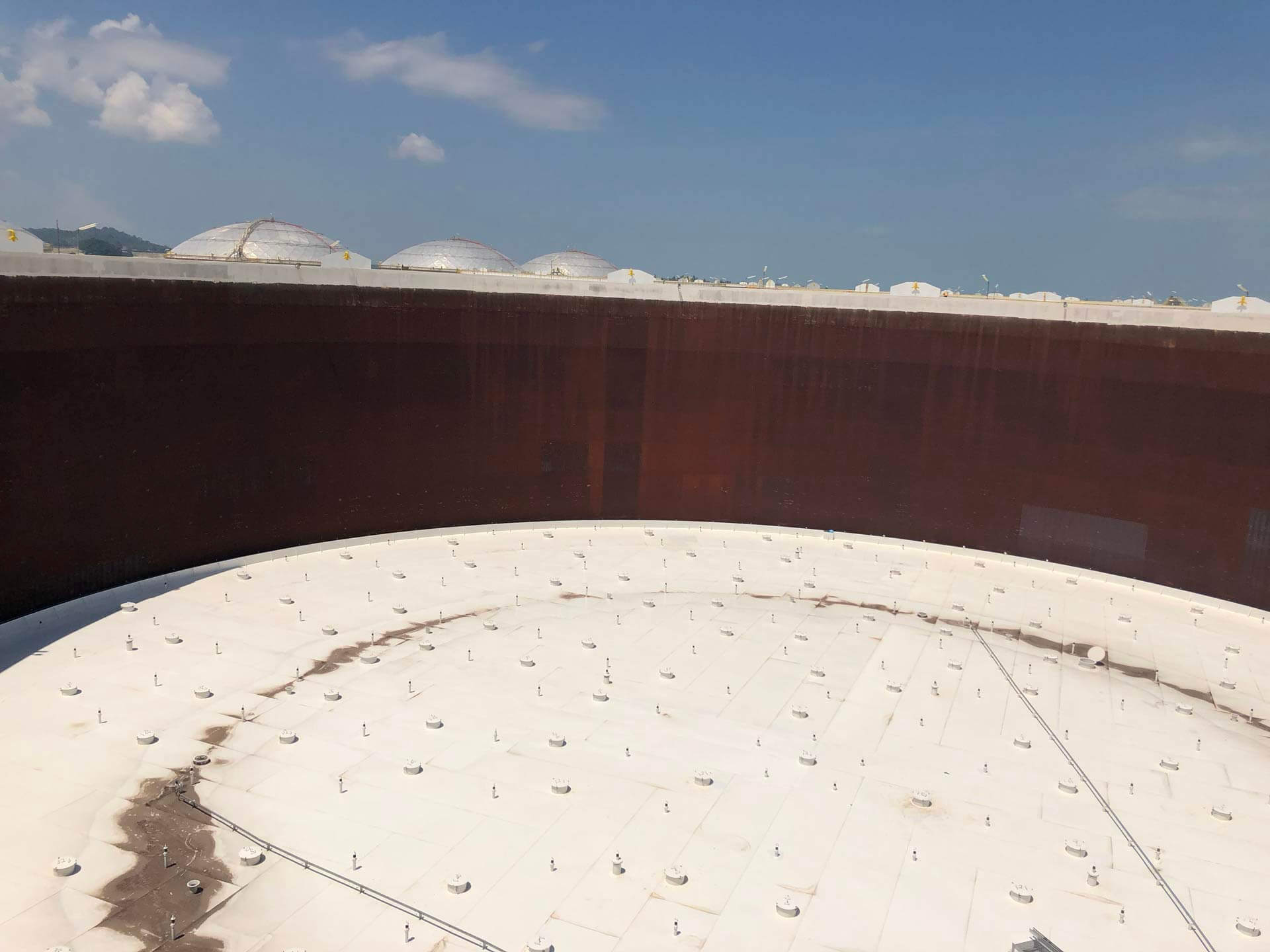Risk Mitigation for Floating Roof Oil Storage Tanks
Risk Mitigation for Floating Roof Oil Storage Tanks
According to numerous reports, it is estimated that 95% of rim-seal fires are the result of lightning strikes. When considering the massive economic loss of product and infrastructure, human safety, and environmental impact, tank fires are catastrophic events.
These lightning events do not need to be a direct strike to the tank itself. A nearby strike can create a massive voltage potential rise (VPR) across the tank surfaces, including the shell and the floating roof. Typically, external floating roof tanks are constructed with “shunts” located within the roof decking. The shunts are intended to create an electrical bond between the shell and the floating roof to avoid differences in electrical potential.
Sadly, shunts are extremely unreliable and cannot be visually inspected except through a maintenance event, and these occur, on average, at 10-year intervals. This leaves the tank’s ability to safely conduct a lightning strike undetermined and ultimately with significant risk of fire. The shunt’s poor reliability can be traced to material weakness and loose connections, but frequently the shunts lose metal-to-metal contact with the tank shell through the buildup of petroleum byproducts that accumulate on the tank wall. This creates a spark gap, and in the event of a direct or indirect strike, a spark jumps from one surface to the next and ignites the flammable vapors that escape through the tank seals.
Providing countermeasures to protect tanks from these vulnerabilities is simple and easily corrected. The solution is utilizing Retractable Bypass Conductors (RBCs). LYTECH has developed this industry-leading product that provides an ultra-low-resistance connection that can withstand a strike event of more than 100kA. Retractable Bypass Conductors are recommended in the American Petroleum Institute’s 545 Lightning Protection Recommended Practice and the NFPA 780 Lightning Protection Standard.

- Design – The process of applying RBCs to an external floating roof tank is straightforward. Units are evenly placed around the tank perimeter at a spacing of no more than 30m. As an example, a tank with a diameter of 95m will require 10 RBCs.
- Installation – The installation of Retractable Bypass Conductors can be performed on in-service tanks with no hindrance to operations. RBC installations require no specialized tools or equipment.
- Inspection – RBCs are easily inspected through an unobtrusive visual process requiring no out-of-service time.
To summarize, Retractable Bypass Conductors offer tank owners a significant risk management benefit, providing enhanced, verifiable safety with zero required maintenance. Contact LYTECH for assistance in developing your tank lightning protection plan today.
Risk Mitigation for Floating Roof Oil Storage Tanks
Risk Mitigation for Floating Roof Oil Storage Tanks
To summarize, Retractable Bypass Conductors offer tank owners a significant risk management benefit, providing enhanced, verifiable safety with zero required maintenance. Contact LYTECH for assistance in developing your tank lightning protection plan today.

